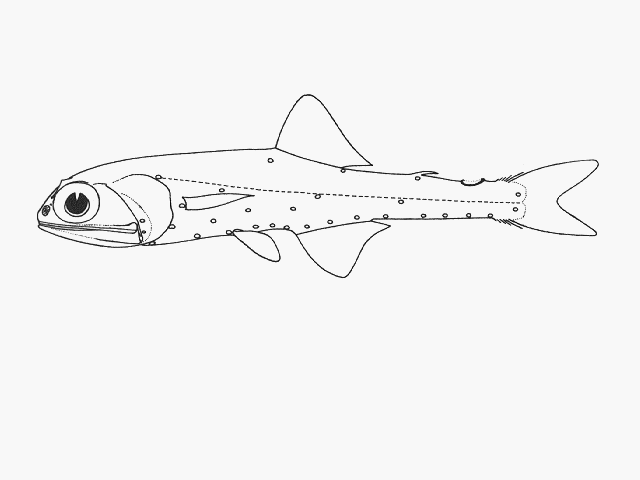| Myctophidae (Lanternfishes), subfamily: Notolychninae |
| 6.3 cm TL (male/unsexed) |
|
bathypelagic; marine; depth range 25 - 700 m, oceanodromous |
| Worldwide distribution in tropical, subtropical and temperate waters. Eastern Atlantic: west of British Isles and Bay of Biscay to South Africa. Western Atlantic: Canada to Argentina. Western Pacific: between 0° and 32°S. Eastern Pacific: between 32°N and 30°S, but with 20°S southern limit in Peruvian Transitional Zone. Eastern Indian Ocean: between 9°-32°S. |
|
Dorsal spines (total): 0-0; Dorsal soft rays (total): 10-12; Anal spines: 0-0; Anal soft rays: 12-15; Vertebrae: 27-31. Branchiostegal rays: 9 (Ref. 31422). Anal organs 8; a single deeply set translucent supracaudal gland present in both sexes, but no infracaudal gland; males have much larger eyes and a longer supracaudal gland than those of females (Ref. 39633). |
| High-oceanic, epipelagic and mesopelagic (Ref. 4479). Found between 375-700 m during the day and between 25-350 m at night (Ref. 4066). Size stratification with depth during the day only (Ref. 4775). Juveniles migratory; adults migratory, partially migratory or non-migratory (Ref. 4775). Feed on copepods, conchoecid ostracods and euphausiids (Ref. 4775). Oviparous, with planktonic eggs and larvae (Ref. 31442). Also Ref. 58302. |
|
Least Concern (LC); Date assessed: 11 July 2012 Ref. (130435)
|
| harmless |
|
Source and more info: www.fishbase.org. For personal, classroom, and other internal use only. Not for publication.

